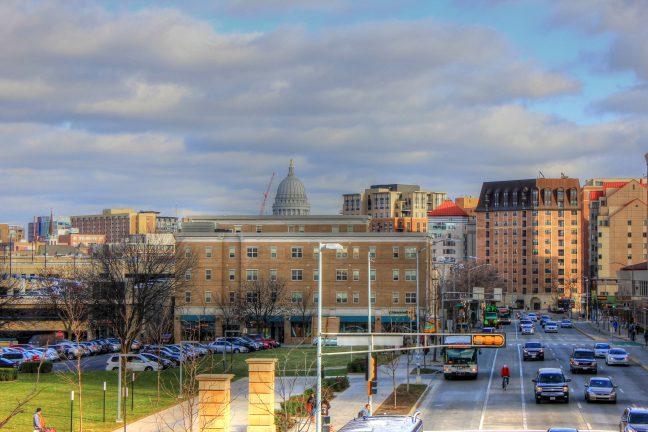Racial and ethnic inequality in access to the University of Wisconsin System is substantial and increasing according to a new study on how to close these disparities in Wisconsin’s higher education system.
The Center on Wisconsin Strategy released a report earlier this month after discovering that while Wisconsin’s diversity is increasing, access to UW-Madison for students of color has decreased greatly, COWS senior associate Matthew Braunginn said.
“We’re hurting the Wisconsin economy by not investing in these institutions and by not making sure that these disparities are closed,” Braunginn said. “Investing in these institutions help our families become really self-reliant and have that basic human dignity that I believe everybody deserves.”
According to the COWS report, the most essential problem for UW-Madison is access. The chances that students of color from Wisconsin enroll in the UW System has declined while the rates for white students remain steady.
The struggle to make ends meet is increasing across the state, especially for people of color, according to COWS.
The COWS study also said 36 percent of students in the U.S. are housing insecure, and another 36 percent are food insecure. According to Braunginn, both of these factors can affect a student’s academic performance.
But the COWS study also shows that graduating from college in Wisconsin improves living standards.
Graduation rates at UW-Madison are high and the racial and ethnic graduation gap has reduced, COWS reported. But because high school graduates of color are not being admitted to UW schools at a high enough rate in the first place, the number of college graduates of color is still very low.
According to the UW-Madison Division of Enrollment Management provost Sarah Mangelsdorf, the university will continue to transparently report progress in increasing diversity on campus each fall.
“We continue to focus on building a class of students from diverse backgrounds and experiences,” Mangelsdorf said. “We recognize that there’s a lot of work ahead in this regard and that this will take the work of the entire UW-Madison community.”
According to sociology and educational policy studies associate professor Eric Grodsky, the UW System’s admission process looks at factors beyond academic achievement that are more equity enhancing.
Grodsky added that while disparities in admission to UW is a problem, racial and ethnic disparities don’t begin in college. This disparity can be attributed to academic achievement in high school, which is dependent on exposure to good schools, teaching and other stressors.
“We need to believe that our educational institutions and our public institutions generally are truly equitable,” Grodsky said. “We need to all own what happens to those institutions because those institutions reflect priorities that people have.”
Braunginn said lack of resources for K-12 schools hurt students of color especially. As a result, they perform poorly in school and then miss out on post-secondary educational opportunities.
Grodsky added that investing in early childhood education would prepare students from the beginning. Two-thirds of disparities between African American and white students seen in eighth-grade achievement test scores could be addressed as early as kindergarten.
“It doesn’t mean that there isn’t work to be done across higher education, but if you want to get ahead of this the best way to do that is prevent it from happening in the first place,” Grodsky said.
The Wisconsin Department of Public Instruction released data that showed less than half of public education students are proficient in language arts and math. Wisconsin’s racial disparity in high school graduation rates was the nation’s worst in 2017, according to COWS.
In addition, students of color that come from less advantaged backgrounds may experience summer slide — when kids lose knowledge gained during the school year over the summer, according to Grodsky.
Grodsky is part of a study that found enrollment and literacy skills of entering kindergartners in Milwaukee and Madison were quite high. So the problem doesn’t necessarily lie in gaining knowledge, according to Grodsky. Instead, the challenge is preserving what they learn.
In fact, places like Milwaukee already have a diverse populace. The issue lies in providing the resources to bridge the gap between students of color and the university so that the university populace is more representative of increasing diversity, Braunginn said.
Walker unveils more details for student debt relief proposal
“We see [UW-Milwaukee] as a cornerstone institution that has the capability to serve and uplift a lot of Wisconsin families, but it’s increasingly difficult for them to do so on constant budget constraints,” Braunginn said.
The COWS study called for particular investment in UW-Milwaukee as well as more racial, ethnic and economically targeted aid from the UW System overall.
A reinvestment would allow UW schools to create racial and ethnic support initiatives to create a more welcoming and supportive environment, according to COWS.
“The bottom line is that these institutions need the resources to launch these initiatives,” Braunginn said. “Through our last few governors, there’s been a constant cut into these public institutions.”
An investment in public education overall would prepare students from a young age to become college graduates, Grodsky said, and increasing opportunity from the beginning could help create a more diverse student body at the university level.
In panel, gubernatorial candidates talk school funding, economic inequality
It’s important to live up to the ideals of equal opportunity by making sure everybody is given an opportunity to a quality education, Grodsky said.
“Diversity in every respect is important because, as a professor, I need students to be engaged in critical thinking, I need them to have lots of perspectives,” Grodsky said. “You can only be so worldly when you’re sitting in Madison. The best way to do that is to bring people from all parts of the world in.”


